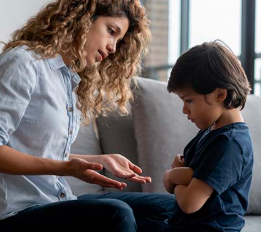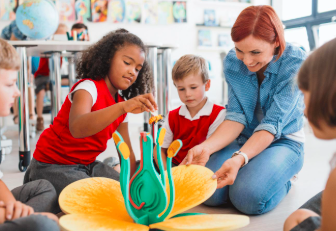Emotional regulation is a key developmental milestone in early childhood. When young children learn how to recognize and manage their feelings, they gain essential tools for building positive relationships, succeeding in school, and feeling confident in themselves. As caregivers, educators, and family members, there are many ways we can support this important growth with care and understanding.
Understanding Emotional Regulation
Emotional regulation is the ability to respond to experiences with a range of emotions in a socially acceptable and flexible manner. For young children, this doesn’t mean avoiding strong feelings—it means learning how to express them safely and recover from distress with support.
In preschool and early childhood years, children are just beginning to name their emotions. They rely on trusted adults to model calm responses, validate their feelings, and offer guidance in managing big emotions like frustration, sadness, or excitement.
Creating a Supportive Environment
One of the most powerful ways to nurture emotional skills is by providing a stable, caring environment. Consistent routines, predictable expectations, and warm relationships help children feel secure. When children feel safe, they are more open to learning how to cope with emotions in healthy ways.
In classroom settings, calm spaces or “cozy corners” give children a place to regroup. At home, simple routines like reading a comforting story or practicing deep breaths together can help children build inner calm.
Modeling and Naming Emotions
Children learn a great deal by observing adults. When caregivers talk about their own emotions clearly—saying things like “I feel disappointed because we can’t go outside right now”—they help children build a vocabulary for their feelings.
Encouraging children to use words like happy, worried, or proud helps them express their inner experiences. Over time, this supports fewer tantrums and more cooperation, as children become more confident communicators.
Using Stories and Play
Books, songs, and pretend play are powerful tools for emotional learning. Stories about characters who face challenges and find solutions help children relate and learn through example. Puppets or stuffed animals can also be used to act out different scenarios, giving children a safe space to explore emotions and responses.
Encouraging Problem-Solving
When children become upset, it’s tempting to jump in with quick fixes. But allowing children to explore simple solutions—like asking for help, taking a break, or choosing a different activity—fosters emotional resilience. With patient guidance, children can learn to manage frustration and find ways to solve problems on their own.
Positive Guidance and Gentle Redirection
Rather than punishing emotional outbursts, it’s more helpful to gently guide children back to a calm state. A soft tone, comforting words, and a reassuring presence teach children that emotions are not “bad”—they are signals we can learn to understand.
Reinforcing moments when a child shows self-control—such as taking deep breaths or using kind words—builds confidence and reinforces positive habits.
Partnering with Families
When educators and families work together, emotional learning becomes even stronger. Regular communication about what strategies are working at home and in school helps create a consistent approach. Celebrating progress, no matter how small, encourages continued growth.
Final Thoughts
Supporting emotional regulation in young children is a compassionate and rewarding journey. With patience, empathy, and everyday routines, we can help young learners build the emotional skills they need to thrive. These early lessons lay the foundation for a lifetime of healthy relationships and personal well-being.


